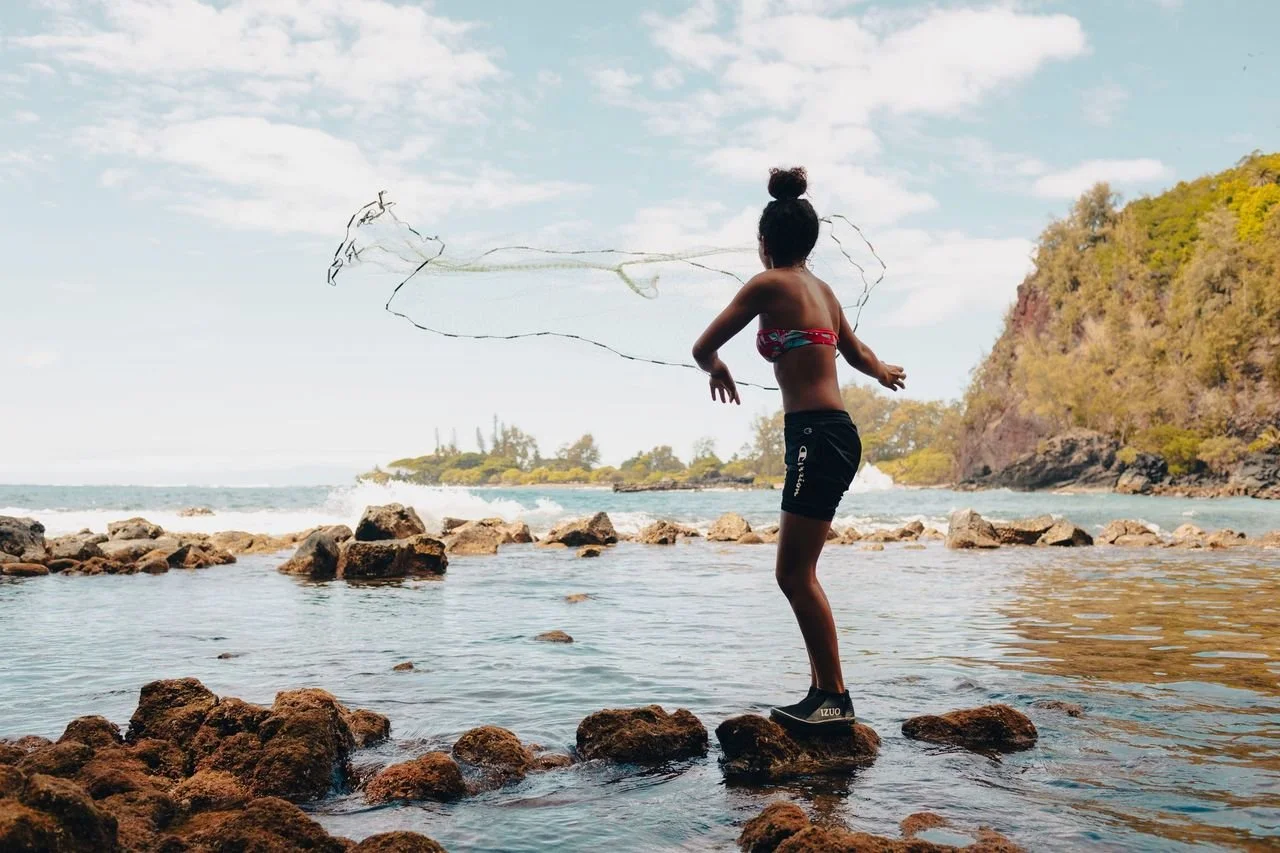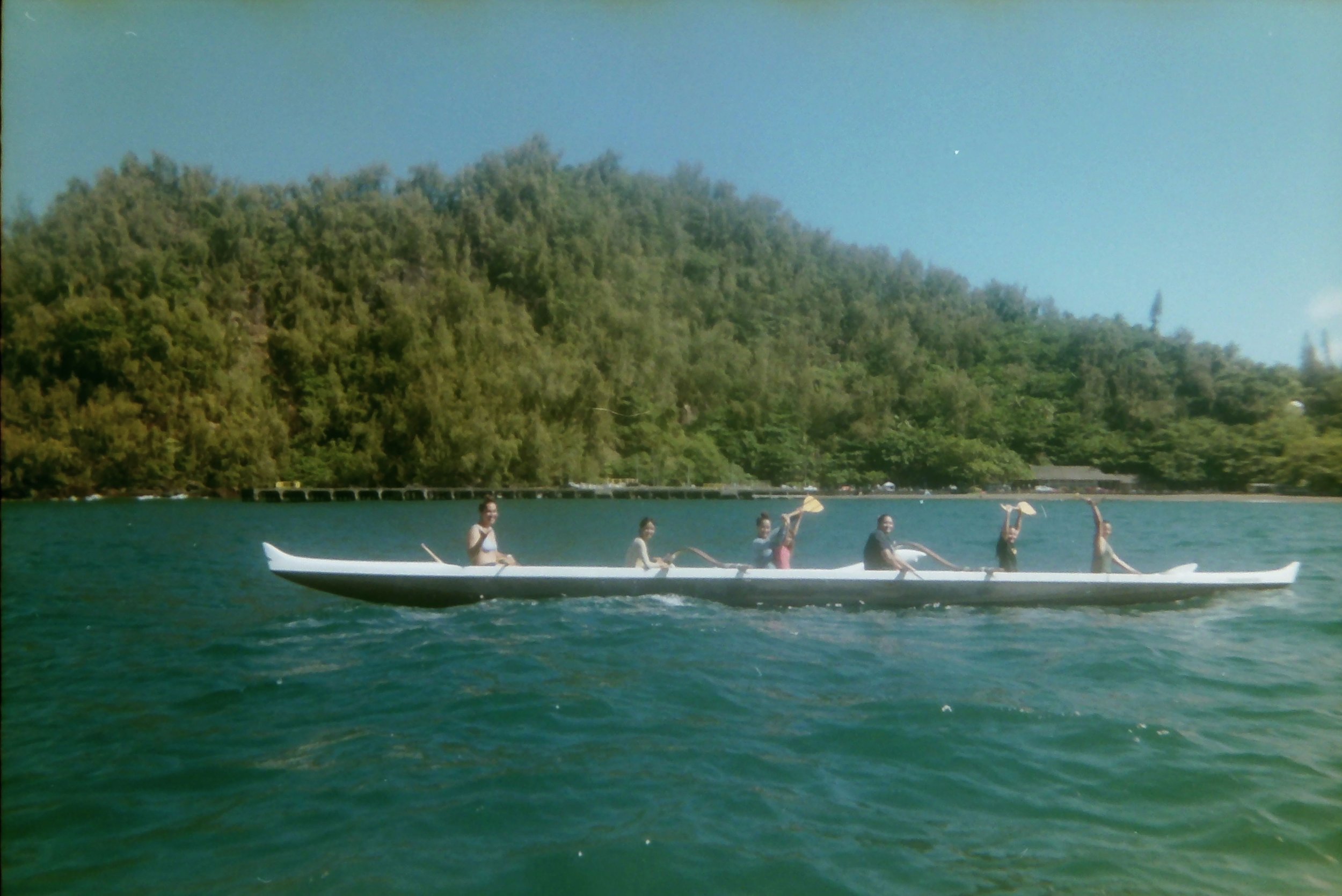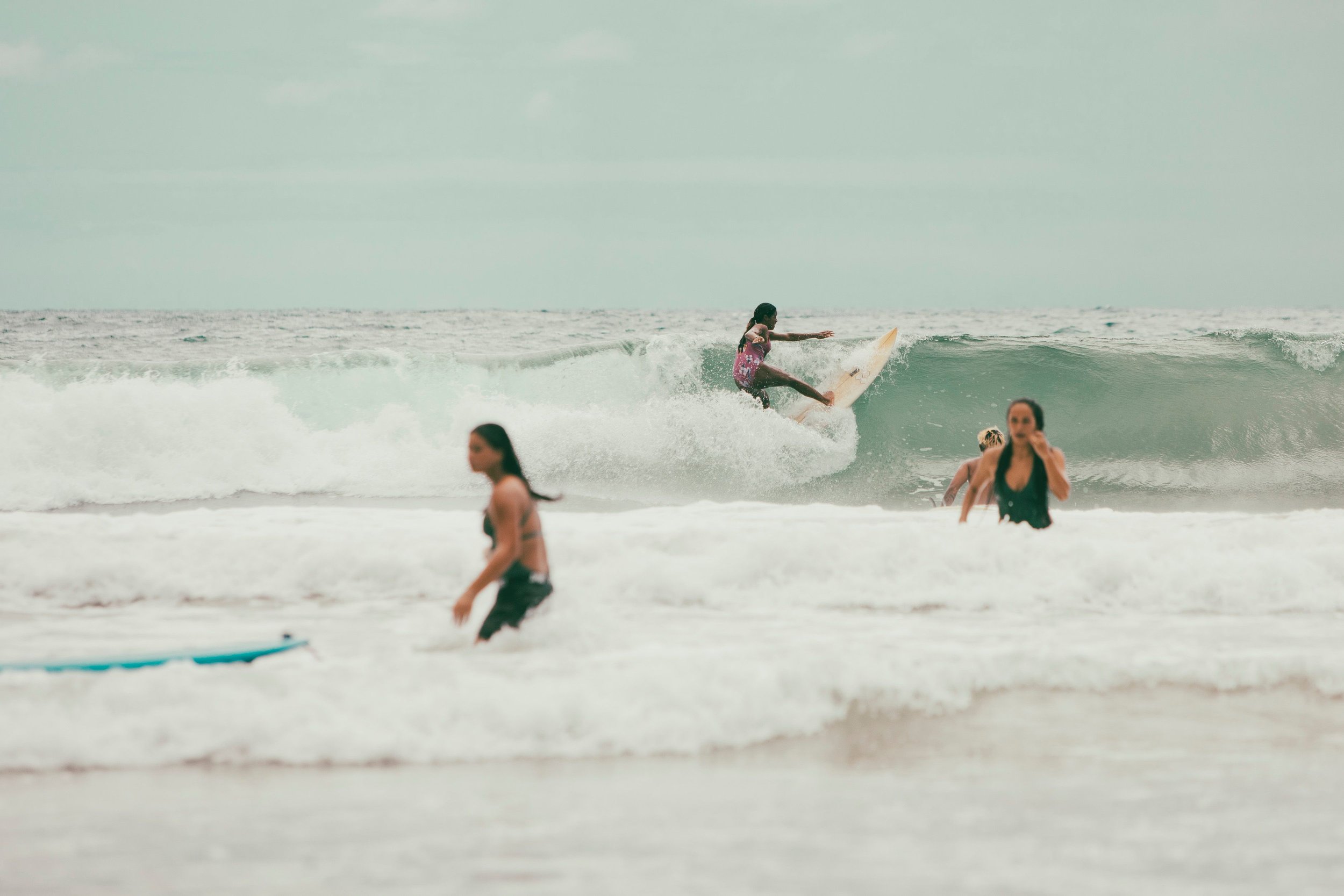Empowering young wāhine in hāna
2021 Young wāhine kai camp
A camp made possible by organizations like Ma Ka Hana Ka ʻIke and Hōlani Hāna, mentors and kumu (teachers), and community members and volunteers.
This article was originally published in Maui Times. Written and photographed by Viola Gaskell. Click here for the original piece: Young Wāhine Kai Camp.
Every Summer, since 2019, a group of teenage girls from East Maui come together to surf, swim, paddle canoe, and connect with their ʻāina and with one another. Hāna surfers Lipoa Kahaleuahi, 33, and Monyca Eleogram, 31, who both grew up surfing competitively on a national level, team up with women in the Hāna community to give East Maui girls mentorship and a safe space to simply be themselves.
In Hawaiian society of old, men and women typically fulfilled separate roles within the kapu system; Men in canoes pursued large, deep-sea fish, while women gathered limu (seaweed) and ‘opihi (shellfish) from the shoreline. In Hāna, however, it is documented that women fished both in the shallows and the deep, “redefining gender roles of the time,” Kahaleuahi said.
In East Maui, from Keʻanae to Kīpahulu, ocean access is plentiful, as are resources like ʻopihi, limu, and fish. However, with a small population and no lifeguards, surfing is not as accessible as one might think.
Access to transportation and a board aside, Eleogram attributes the small number of female surfers to precedence. “It just isn’t very generational in our community to have girl surfers, and surfing is already not a normal activity in a lot of households, so how are you going to get motivated?” Eleogram posited.
Kahaleuahi and Eleogram said they want to see more girl surfers in Hāna, and that one of the goals of the camp is for the girls to feel comfortable enough to reach out if they want to surf. “Lipoa and I gave them our phone numbers and said, ‘this is where you find me, I live here, come over, knock on my door, I’ve got a board for you if you need one,’” Eleogram said.
The camp is three days long “to make sure they know that we’re serious, that we really do care,” Eleogram explained. “We are here because we want you to go surfing, to start paddling canoe and to fish and we want you to believe that those things aren’t just for boys, or aren’t just for rich people — they are for anyone, and you have people in your community who want to support that.”
Surfing has taken Kahaleuahi around the world, competing on a national level in high school and on the scholastic team at University of California Santa Barbara, before surfing around the world, from South Africa to the Mentawais, to New Zealand, where she lived for over a year before returning to Hāna in 2016.
“There is so much besides just the physical act of surfing that we can testify towards that has changed our lives,” Kahaleuahi said. “There is so much in it that we can expose our youth to — the spiritual, social and cultural components of surfing, and there are other women in our community who can testify to art, to paddling, to passing on traditional ecological knowledge about fishing, and to what these things mean to them.”
Bella Kuailani, a composed 14-year-old who was the most experienced surfer at camp this year, said that surfing is where she finds her confidence. “Being in the water makes me feel really good, like I am in a space where I can really be myself,” she said.
The girls were without phones for the duration of the camp, an uncoupling that 12-year-old Hailani called “a relief”. 14-year-old Haʻakea Hueu from Keʻanae agreed, adding that she felt “less stress without social media”.
“To be from Hāna is to be connected to our ʻāina,” Kahaleuahi said, “but there are a lot of things pulling us away from that these days and we want our girls to have that time to disconnect and tap into each moment, each relationship, that is being created here.”
Hueu said that being able to surf with Eleogram and Kahaleuahi was “inspiring” because she too wants to be a professional surfer someday. “It is my dream, and the fact that they accomplished it makes me feel better, like I am able to do that too,” she said. She and her friend, 14-year-old Kawelo, said that the sea itself has been a constant comfort throughout their lives. For Hueu, the notion of home rests in the sea at Keʻanae landing, where she grew up swimming, “hearing the waves crashing in the manō (shark) cave”.




